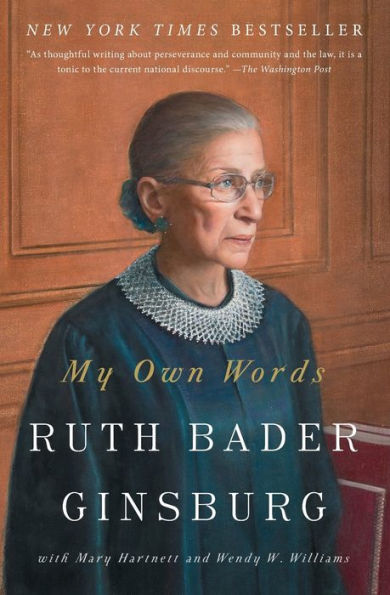Table of Contents
A Note on Sources 11
Preface Ruth Bader Ginsburg 13
Timeline 23
Part 1 Early Years and Lighter Side
Introduction 29
1 Editorial for the School Newspaper (Highway Herald) 39
2 One People (Editorial, East Midwood Bulletin) 45
3 Wiretapping: Cure Worse than Disease? (Letter to the Editor, Cornell Daily Sun) 54
4 Marty Ginsburg's Favorite Subject (Remarks Introducing Justice Ginsburg) 61
5 Law and Lawyers in Opera 71
6 Remembering Justice Scalia 80
7 The Scalia/Ginsburg Opera 87
8 The Lighter Side of Life at the Supreme Court 104
Part 2 Tributes to Waypavers and Pathmarkers
Introduction 115
1 Belva Lockwood 117
2 Women's Progress at the Bar and on the Bench 123
3 From Benjamin to Brandeis to Breyer: Is There a Jewish Seat on the United States Supreme Court? 137
4 Three Brave Jewish Women 149
5 Sandra Day O'Connor 154
6 Gloria Steinem 161
7 Remembering Great Ladies: Supreme Court Wives' Stories 163
Part 3 On Gender Equality: Women and the Law
Introduction 187
1 Women and the Law: A Symposium Introduction 195
2 How the Tenth Circuit Court of Appeals Got My Wife Her Good Job 206
3 The Frontiero Reply Brief 213
4 The Need for the Equal Rights Amendment 225
5 The VMI Bench Announcement 241
6 Advocating the Elimination of Gender-Based Discrimination 247
Part 4 A Judge Becomes a Justice
Introduction 277
1 Rose Garden Acceptance Speech 285
2 Senate Confirmation Hearing Opening Statement 294
Part 5 The Justice on Judging and Justice
Introduction 317
1 Workways of the Supreme Court 329
2 Judicial Independence 349
3 Tribute to Chief Justice Rehnquist 359
4 The Madison Lecture: Speaking in a Judicial Voice 368
5 "A Decent Respect to the Opinions of [Human]kind": The Value of a Comparative Perspective in Constitutional Adjudication 400
6 Human Dignity and Equal Justice Under Law
a Brown v. Board of Education in International Context 417
b Remarks on Loving v. Virginia 426
c Remarks on the Value of Diversity: International Affirmative Action 431
7 The Role of Dissenting Opinions 443
a Remarks on the Role of Dissenting Opinions 446
b Bench Dissent Announcements (Ledbetter, Vance, Shelby County, Fisher, National Federation of Independent Business, Hobby Lobby, Carhart) 460
8 Highlights of the U.S. Supreme Court's 2015-16 Term 509
Conclusion 531
Acknowledgments 537
Notes 541
Illustration Credits 577


